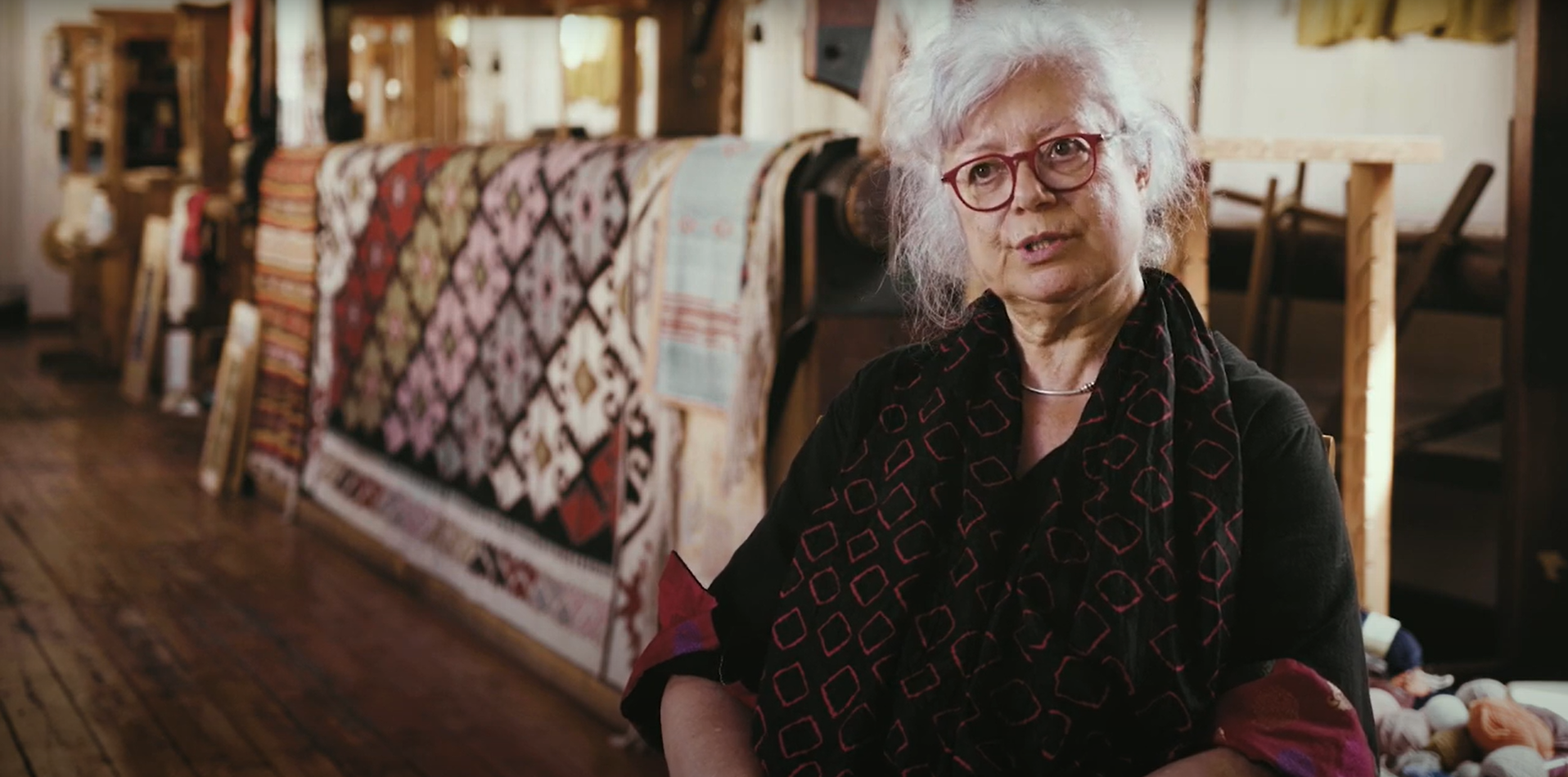Four videos showing how Greek identities are embodied by the craft of weaving, weaving together past, present and future
When thinking about Greece and its history, it is impossible not to mention mythology: stories and tales encapsulating the behaviours, values and beliefs of a country and, above all, of its people. Traditional crafts are included in these myths, most times they are the core of the narrative, and come to define the character of the different regions of the country, representing migrations, contacts, exchanges and natures.
Weaving represents an important activity for Greece, it is present in its past and also in its present, and we are sure will play a big role in the future of the country. We can go on saying that weaving holds together these three moments in time, allowing the country to maintain traditions and connections to its history while still teaching values to the younger generations through hands, minds and hearts.
In July 2022 EFHA decided to explore the Peloponnese in search for woven stories that could show the complexity of European crafts and recover some testimonies about specific local and global aspects of greek weaving. Thanks to the invaluable support of Angeliki Rumelioti of the Basil Papantoniou Foundation, we discovered a world of colours, materials, techniques and even secrets: a language made of artefacts, spoken by people with many accents, but always with a common understanding and appreciation of the nuances.
The first person we encountered was Ioanna Papantoniou, founder and president of the Basil Papantoniou Foundation in Nafplio, who retraced her life story as if every moment was instrumental in finally being able to establish an institution devoted to the preservation and celebration of Greek customs, and especially to collect objects and memories related to greek costumes and fashion. She then unveiled the story of the Plafi, a carpet made by the women of a village for the wedding of one of them. The Plafi stands as the material testimony of the complex movements and cultural influences that form Greek identity today.
Please be aware that this page contains media content embedded from YouTube. Viewing this media is subject to their terms and privacy statements. Please refer to their privacy statements for more information on how your data is used.
of third-party content services.
If you don’t want to load all embedded media, you can .
We then moved to Leonidio to meet visual artist Loukia Richards and, standing barefoot on a beautiful hand-woven kilim, a carpet that has belonged to her family for generations, learned from her how Craft can be rightfully considered an act of feminine entrepreneurship and even Political Art: a way for society to grow together, and form intangible ties crossing space and time.
Please be aware that this page contains media content embedded from YouTube. Viewing this media is subject to their terms and privacy statements. Please refer to their privacy statements for more information on how your data is used.
of third-party content services.
If you don’t want to load all embedded media, you can .
But craft is not just something to be looked at in houses or museums. It is alive, and only in this liveliness can we hope to grasp its true societal and cultural value. Indeed, learning and teaching are actions intrinsically connected with the preservation of craft, as demonstrated by institutions such as SEN Heritage Looms, based in Athens. Here, historian Sophia Tsourinaki starts from the archeological recovery of looms, tools and techniques to teach to a community of weavers, eager to keep writing myths through the production of beautiful objects that retain the flair of tradition.
Please be aware that this page contains media content embedded from YouTube. Viewing this media is subject to their terms and privacy statements. Please refer to their privacy statements for more information on how your data is used.
of third-party content services.
If you don’t want to load all embedded media, you can .
What makes craft important are not the objects, though. It is people who are able to turn an action into a feeling, a tradition, and ultimately an embodiment of the identity of an individual and of a community. Many are the voices that can tell this story, from the memories of the women of Tsitalia, to the experience of contemporary weavers who decided to turn traditions into their life work, as Maria Gonidou and Thomai Rodopoulou-Psarologou.
Please be aware that this page contains media content embedded from YouTube. Viewing this media is subject to their terms and privacy statements. Please refer to their privacy statements for more information on how your data is used.
of third-party content services.
If you don’t want to load all embedded media, you can .
The result of our journey was a series of videos substantiating: a collection of myths in their own right, demonstrating how narratives and objects together paint the picture of a nation whose strong roots steeped in craft motivate a bright and creative future.
This blog was written as part of the CRAFTED project, which aimed to enrich and promote traditional and contemporary crafts.

